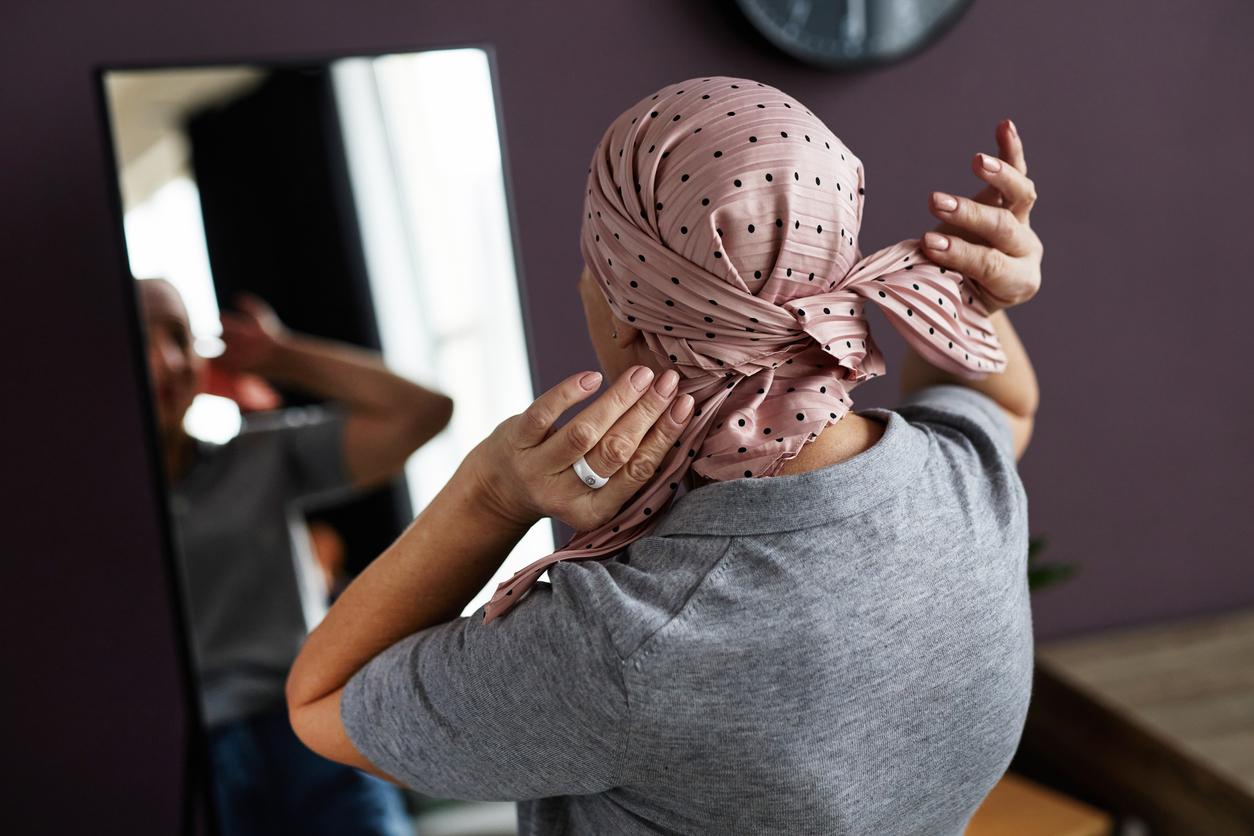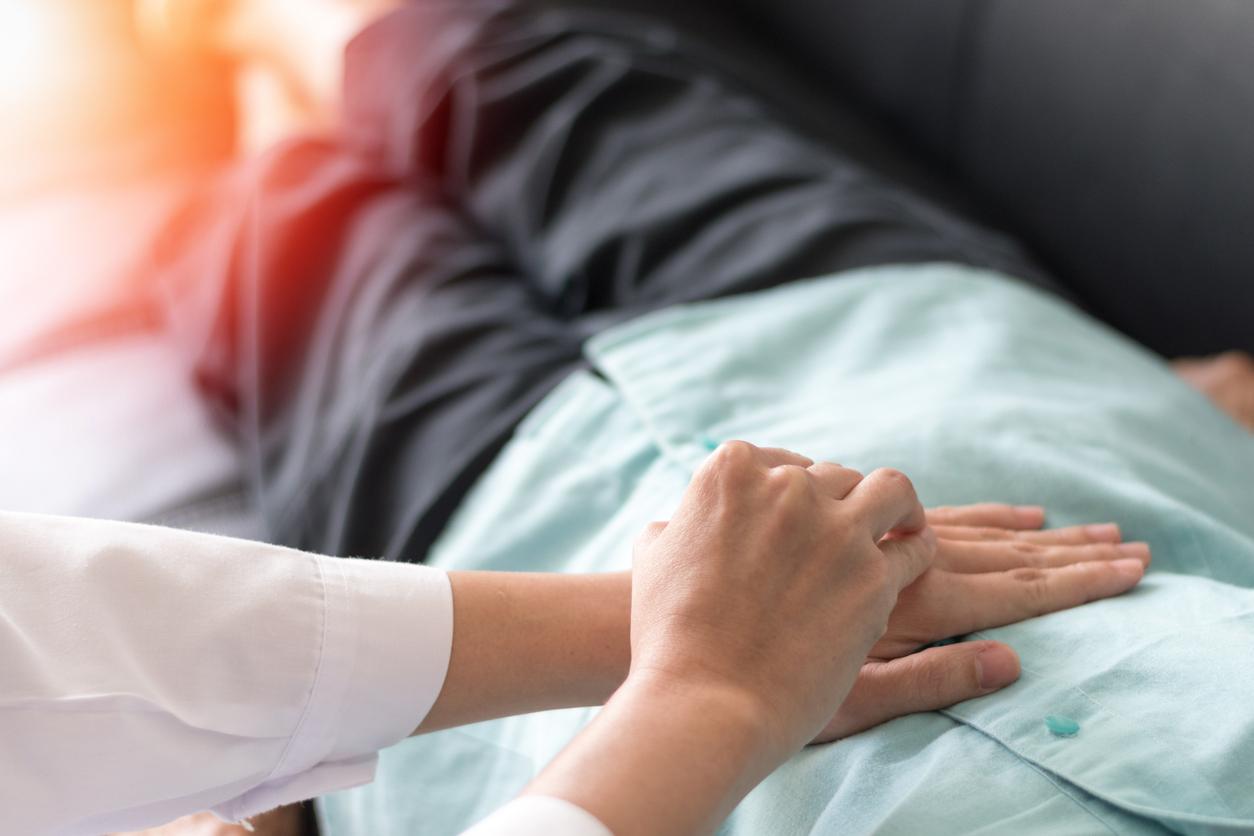Top Santé: What are the main skin problems encountered by women treated for cancer?
Carine Larchet, professional makeup artist and head of the corrective makeup workshop at La Roche-Posay: Treatments like chemotherapy and the radiotherapy undermine the immune system, the skin becomes unpredictable and can show various reactions from one patient to another. In general, the treatments cause a skin dryness. The skin becomes uncomfortable, loses its shine and gets tired. May also appear small redness larger and more daily, even rosacea, struggleand irritation. These manifestations are accentuated in the most sensitive people who may present with hypersensitivity or greater skin intolerance.
In some cases, this can give more serious side effects with dermatological conditions such as xerosis (severe dryness of the skin marked by painful scaling) or folliculitis (inflammatory pimples).
Top Santé: What is the impact of treatments on hair and nails?
Carine Larchet: The general weakening of the metabolism has repercussions on the integuments, that is to say the hair and the nails. Certain molecules used in treatments lead to Hair loss, eyelashes and eyebrows. The nails also weaken, they can become brittle, split or even fall. In question, the matrix (base of the nail which produces the keratin) which dries out, is found altered and atrophied.
Care must therefore be taken to maintain the hydric and nutritional state of the skin through beauty rituals adapted to skin fragility.
Top Santé: What are the first good things to do in the morning for the face?
Carine Larchet: In the morning and in the evening, we think about cleaning and remove make-up from your skinwith skin-cleaning products or surgras soaps, (paraben-free, soap-free, alcohol-free, preservative-free), which gently cleanse without drying out the skin. Abrasive make-up removing wipes should be avoided because gestures and contact with fibrous tissue can cause redness accompanied by pain. We opt for dermo-cleaning products.
On the gestural side, we banish friction, which is too irritating. They are replaced by softer gestures such as smoothing and circular movements. We use a makeup remover specific for sensitive eyes. And you can use a gentle, alcohol-free tonic to properly remove all impurities. I even advise during treatments to avoid contact of the face with hard tap water. You can rinse the skin cleansing treatment with thermal water with a mist rich in minerals and selenium before blending with a tissue.
the eye areashould be given special attention. When you lose your eyelashes and eyebrows, the eye dries up and the area around the eye becomes very painful. It becomes dry and / or very irritated and can redden or even cry in the absence of eyelashes. The treatment used for the eye contour, a sensitive area with skin thinner than the face, must not attack the mucous membranes and must be different of that of the face. We avoid putting the product on the mobile eyelid because it is very sensitive in the absence of eyelashes.
the lip contour, whose mucous membranes also tend to dry out, also needs to be well hydrated.
Top Santé: What are the right actions for the body?
Carine Larchet: We cleanse our skin in the shower with soap-free or super-oily products or lipid-replenishing washing oils.
When you get out of the bath, you sponge your face and body immediately. We do not leave wet skin in contact with air because water on the skin surface amplifies dehydration and gives sensations of tightness. You dry your body without rubbing, letting the towel sponge absorb the water. It is then rehydrated with a moisturizing balm and soothing (fragrance-free and alcohol-free) to prevent itching and keep the skin supple.
Top Santé: Can we keep the same cosmetic treatments?
Carine Larchet: It is important to listen to your skin and see how it reacts. Very often, it no longer supports the care assets used before treatment. This can be seen because there are contact eczema (skin allergy).
I therefore recommend moisturizing and nourishing your skin by choosing suitable products that do not worsen the side effects of the treatments. No more chemical products: too complex in the formulation, with a lot of perfumes, parabens, preservatives and alcoholic bases, they amplify the drying out or even induce allergic reactions.
Conversely, very natural care can be risky: the essential oils in the products can be too strong and make the skin reactive.
Dermocosmetics offer a good compromise because it offers extremely simplified formulations, with white fragrances devoid of colorants, limited in odors (without alcohol which dries out) and in preservatives (irritants). When in doubt, it is better to seek advice from a aromatherapist.
Top Health: In addition to hydration, photoprotection of the face is also important …
Carine Larchet: Yes, in contact with outside light, the skin is photosensitized, even in the absence of sun. Spots similar to a pregnancy mask may eventually appear. We therefore protect our skin on a daily basis with a photoprotection index. Today, certain simple products make it possible to hydrate and protect at the same time, such as for example BB creams Where CC creamswhich include a protection index (always from dermocosmetics). Also discover the Carine Larchet’s advice to take care of her complexionduring and after cancer.
Thanks to Carine Larchet, professional makeup artist and head of the corrective makeup workshop at La Roche-Posay. Discover more tips and tutorial videos on on space My skin during cancer at the La Roche-Posay site.
Check out La Roche Posay’s video on the daily routine for the face:
The evening facial routine video:
Read also :
Video Pilates sessions for women with cancer
Cancer: taking care of yourself during treatment
Pink October: 12 warriors against cancer
I hate my body: how to come to terms with it


















